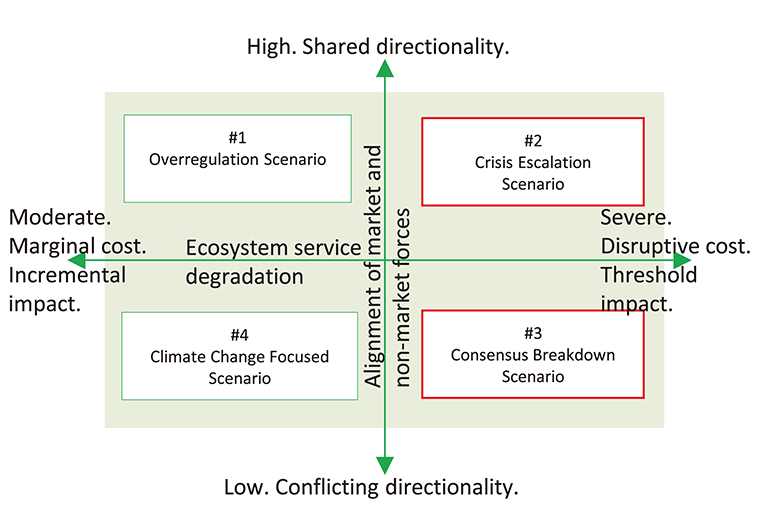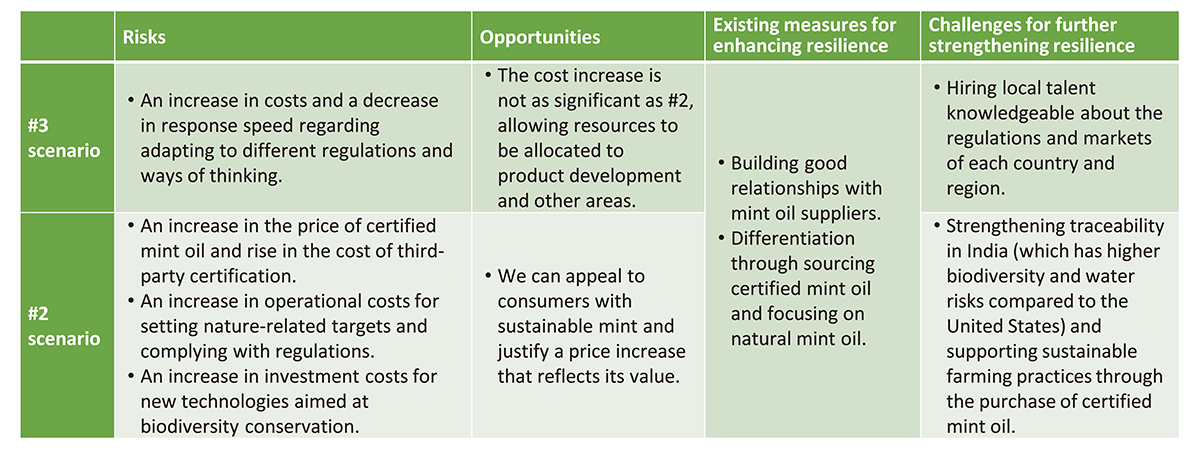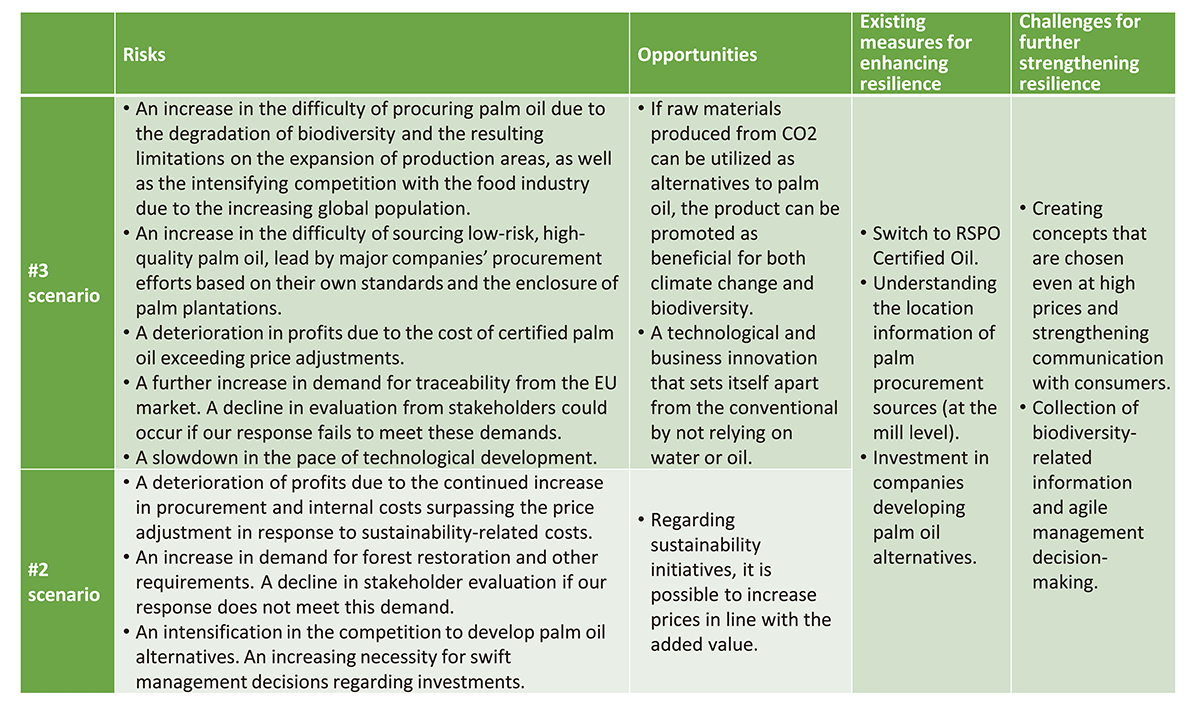The Lion Group, in accordance with the Biodiversity Policy and following the framework of the TNFD recommendations, has analyzed its dependence and impact on nature as well as nature-related risks and opportunities. We disclose our nature-related financial information, compiling the following results. (This page is an overview. The full version is available here(618KB)). The priority areas of analysis are as follows:
| Core Elements of the TNFD’s Recommended Nature Related Disclosures |
The Lion Group’s Initiatives | |
|---|---|---|
| Governance | The organization’s governance of dependencies, impacts, risks, and opportunities related to nature. |
|
| Strategy | The actual and potential impacts of nature-related dependencies, influences, risks, and opportunities on the organization’s businesses, strategies, and financial planning. |
|
| Risk Management | The processes used by the organization to identifies, assesses, prioritizes, and monitors nature-related dependencies, impacts, risks, and opportunities. |
|
| Metrics and Targets | The metrics and targets used to assess and manage relevant nature-related dependencies, impacts, risks, and opportunities. |
|
The following heat map qualitatively and relatively evaluates the degree of dependence and impact on nature in the direct operations and upstream and downstream value chain for each of the material businesses, based on the information recommended by TNFD’s ENCORE and considering the characteristics of our business. (Dark green: high dependence ⇔ light green: low dependence, Dark blue: high impact ⇔ light blue: low impact)
Both businesses have a high degree of dependency and impact at upstream. The reasons for this are as follows.


Focusing on areas covered by material businesses and envisioning the year 2030, we conducted scenario analysis by concentrating on the second and third quadrants*of the four quadrants created by combining the two axes recommended by TNFD: “Ecosystem service degradation” and “Alignment of market and non-market forces.” (given that over 70% of biodiversity has declined in the past half-century according to WWF, we believe that scenarios where ecosystem service degradation continues to worsen are of high priority for our group.)
The analysis was conducted in a workshop format that included procurement and technology development personnel. We identified changes in the business environment, the risks and opportunities arising from these changes, and the actions that should be taken in response. The summary of the scenario analysis results is as follows. (#3 scenario is recognized as being closest to the current situation and is listed at the top.)

*
#2: In response to the severe degradation of biodiversity,the necessity of biodiversity conservation has become a common understanding across society as a whole, including both domestic and international governments and consumers.
#3:Biodiversity is deteriorating rapidly, yet the perspectives and regulations regarding biodiversity conservation vary significantly between countries, regions, and individuals.



